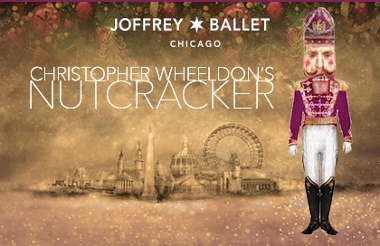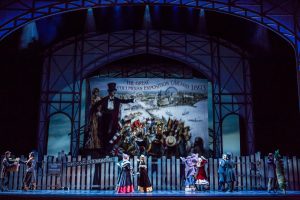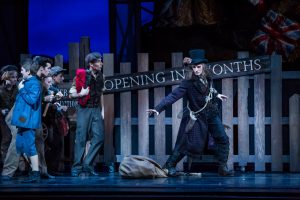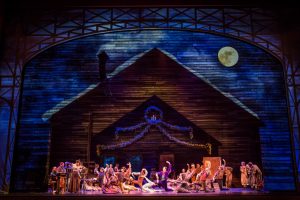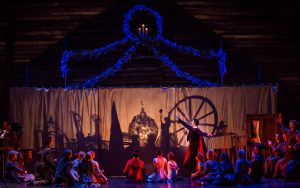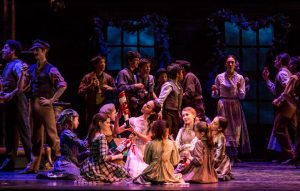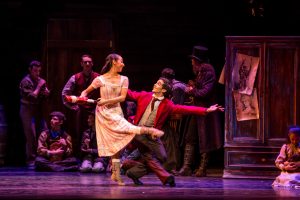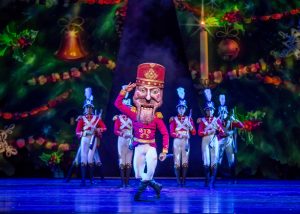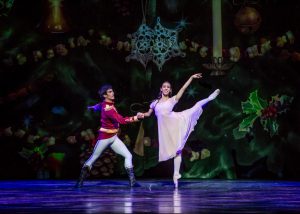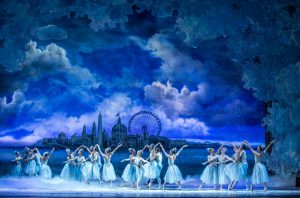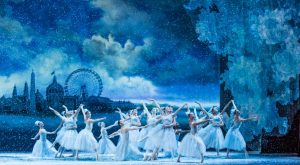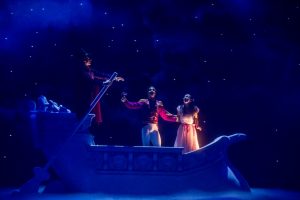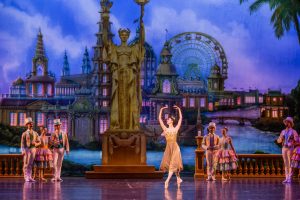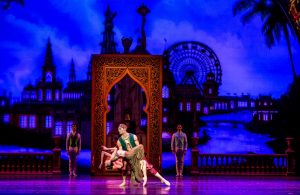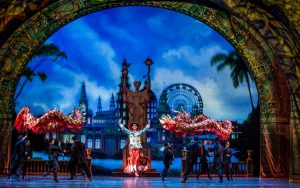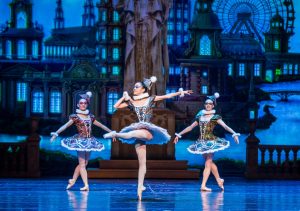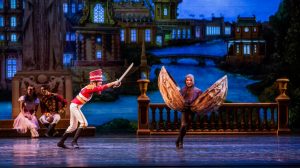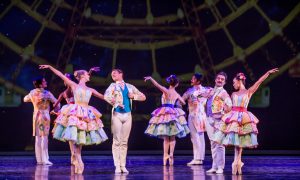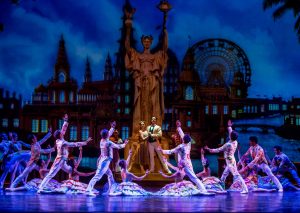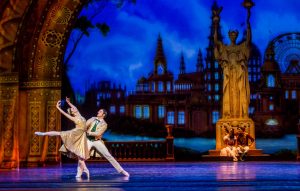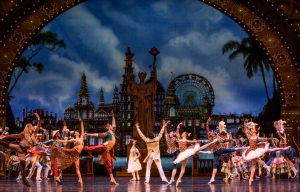TCHAIKOVSKY MEETS THE WORLD’S FAIR:
A PERFECT NUTCRACKER RECIPE
It was a marvel of the ages and the crowning achievement of the 19th century (except maybe the Eiffel Tower). Now, happily, the World’s Fair of 1893 has returned to Chicago. And, since it’s via Joffrey Ballet’s new site-specific Nutcracker (replacing Robert Joffrey’s equally American version), it will last a lot longer than the Columbian World’s Exposition. The Windy City deserves no less than this great gift to bless us beyond 2016.
Most essentially, the gorgeous Auditorium Theatre, home of this repurposed ballet, was indeed present when the grand fair and its (in)famous Midway opened: Christopher Wheeldon’s sumptuous reanimation of Tchaikovsky’s masterpiece (the composer himself died while the Fair was in progress) makes a miracle out of that correlation: The Tony-winning choreographer seamlessly connects the staging and the building in a marriage made in scenic heaven. Remarkably, the score, perfectly performed live by the Chicago Philharmonic, seems to serve the story more than the plot dictates the dances.
We couldn’t be more in the (old) moment. With projections that dance as much as the ensemble and magnificent vistas of the “White City” to savor throughout, the result is enthralling make-believe–electrically thrilling and newly nostalgic, even if tethered to a concept no more substantial than E.T.A. Hoffman’s original story of Clara and her Nutcracker Prince.
It all begins in bracing humility: The first half of Brian Selznick’s class-conscious, dream-like storyline is set in 1892 (the year the ballet premiered in Saint Petersburg), five months before the exposition’s opening. It’s Christmas Eve but, abandoning Joffrey’s lavishly decorated ballroom from the 1850s, Wheeldon’s much less plutocratic production takes place in a shanty of a shack. It’s the slum that houses wistful Marie (Cara Marie Gary)’”formerly Clara’”and her mischievous brother Franz (Finn Miller), children of workers for the Fair (call them Chicago’s Cratchit clan). Crucially, their widowed mother (Victoria Jaiani) has designed the great golden statue, a virtual sister to the recent Statue of Liberty, that will dominate the fair’s ceremonial plaza and Peristyle.
It seems that the enchanted nutcracker, whose arrival sets in motion a Christmas fantasy with roots in reality, has been stolen from a rich boy’s sled. The toy gets animated into adventures by the Great Impresario (Miguel Angel Blanco), a merry trickster who, replacing Dr. Drosselmeyer, loosely incarnates the fair’s chief architect Daniel Burnham. In a pitched battle against big-city Rats (no cute mice here), and despite interference from the villainous Rat Catcher (Rory Hohenstein), Marie proves her mettle and transforms her beloved Nutcracker into Prince Peter (Yoshihisa Arai). A celebration on ice follows: This “Snowflakes Central” is framed by breathtaking frost projections that bedeck the theater’s entire façade. Rewarded by the Great Impresario, Marie embarks in a gondola (exactly modeled on the giant plaster ship on the fairgrounds) to witness the glories of the second half: No “land of sweets,” it’s the fabulous Fair itself.
Here Julian Crouch’s dazzling sets and costumes, Natasha Katz’s wizard lighting, and especially Benjamin Pearcy’s eye-popping projections come into fantastic force. The burnished ornate arches that sweep over the stage exactly mirror the now-famous ones created by Louis Sullivan for the Auditorium ceiling. Sullivan’s intricately filigreed proscenium is perfectly and repeatedly painted in kaleidoscope patterns appropriate to the novelty and foreign dances. (In fact, similar Terpsichorean fare was presented in 1893’s International Village’”and, in 1927, recreated in Kern and Hammerstein’s wonderful Show Boat). It’s captivating to watch the giant Ferris Wheel turn as the Waltz of the Flowers swirls below. In a kind of twisted homage to Pygmalion and Galatea, the Great Impresario falls in love with the now-human Queen of the Fair (Jaiani, earlier the statue’s sculptress), a worship that will explode the fantasy forever.
Just as, 123 years (and six generations) later, the World’s Fair in Hyde Park now feels like a dream, so it suddenly seems to Marie and her lost prince. In a burst of splendor the exposition is transcendentally illuminated (a spectacle to all who saw it back then). So is the grand hall that we’re in. In an instant audience and artists connect in an epiphany/apotheosis to be remembered the rest of our lives.
Necessarily with a new edition of a classic ballet, the dancing almost loses precedence to an extravaganza that, well into the 21st century, will be our once and future Nutcracker. Of course, the Joffrey Ballet did not neglect the perfection of movement that distinguishes their dance. Effortlessly, the principals and ensemble move us as they move themselves.
But changes happen in this realm too, most notoriously the questionable substitution of Buffalo Bill, with rope tricks and cowgirl backup, for the very Russian music of the Cossack romp. Madame Ginger now wears an entire house (concealing cavorting almonds) instead of her capacious crinoline. The kiddie dancers and choir are now gone, a huge elimination that many may deplore. And the traditional pas de deux becomes a pas de quatre, with Marie and Peter joining the Queen of the Fair and her adoring Impresario. Plus there’s no more grand exit via balloon a la The Wizard of Oz but, ironically, the new “was-it-all-a-dream?” ending (to make us question the hyperreality of all we saw), is taken exactly from Dorothy Gale’s Kansas.
But it did happen’”and anyone lucky enough to be in the grand old theater last night can’t wait to see it next year. Everything old is new again!
photos by Cheryl Mann
Christopher Wheeldon’s The Nutcracker
The Joffrey Ballet
Auditorium Theatre of Roosevelt University,
50 E. Congress Parkway
ends on December 30, 2016
for tickets, call 312.386.8905 or visit Joffrey
for more shows, visit Theatre in Chicago
